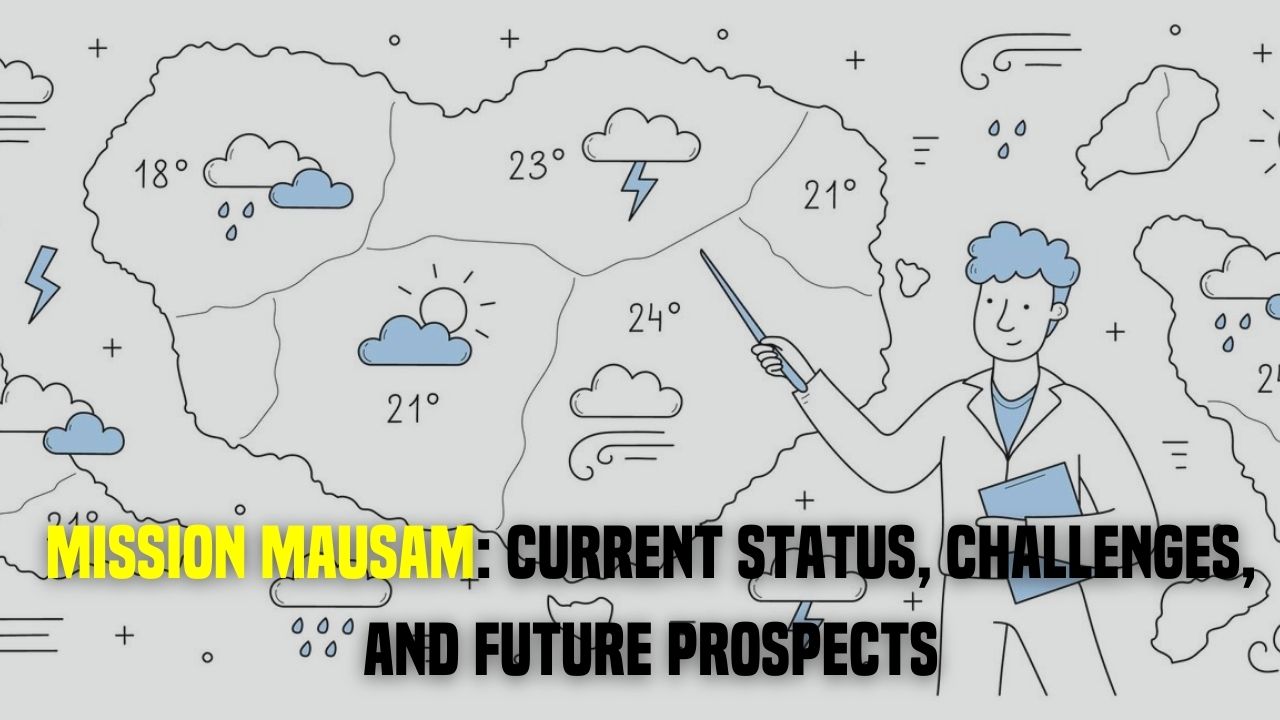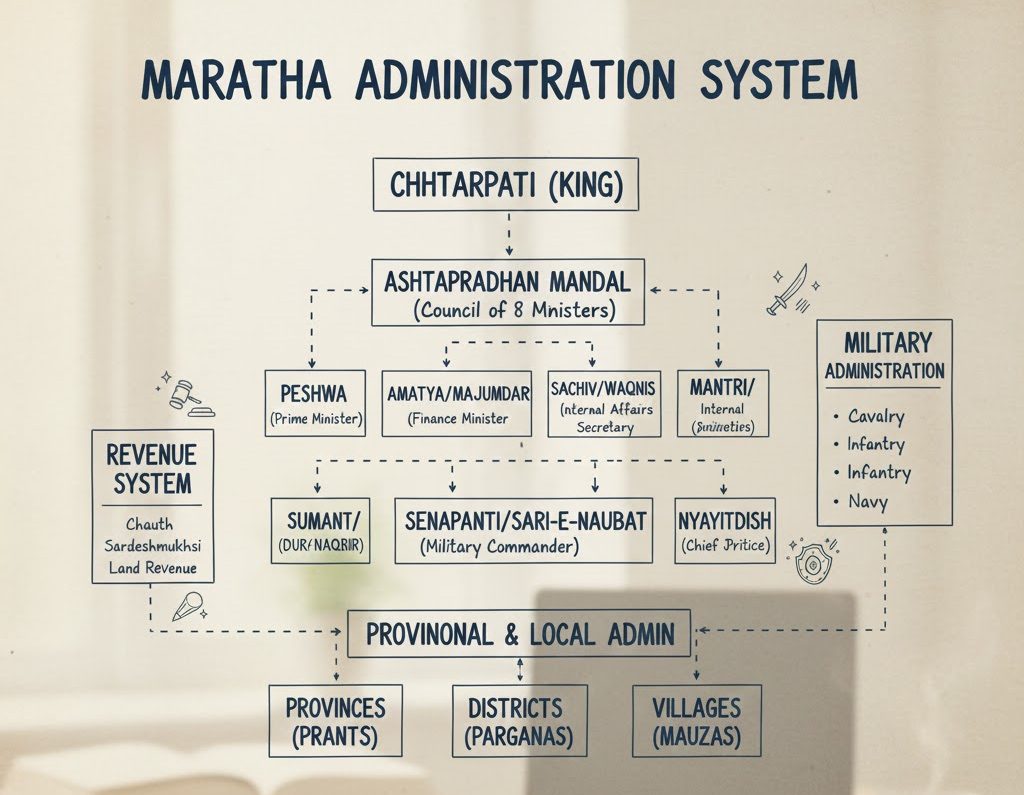Mission Mausam: Current Status, Challenges, and Future Prospects
Inspired by The Hindu Editorial (Sept 14, 2024) titled “Weather Gods: On ‘Mission Mausam’: Attempts at Controlling the Weather are still in the Realm of Uncertainty.”
Mission Mausam, a crucial initiative launched by the Indian government, aims to significantly improve the accuracy of weather predictions and climate preparedness. Despite facing several challenges, the project holds great promise for making India better equipped to handle climate-related events.
Introduction
Weather forecasting plays an essential role in many aspects of our lives, from helping farmers grow crops to ensuring public safety during extreme weather events. With the increasing frequency of unpredictable weather patterns due to climate change, the need for accurate weather predictions is more critical than ever. In response to this need, India has launched Mission Mausam, a government initiative designed to enhance the country’s weather forecasting capabilities. This project is expected to make India weather-ready and climate-smart by improving weather prediction systems. This essay discusses how Mission Mausam works, the obstacles it faces, and the potential it holds for the future.
What is Mission Mausam?
Mission Mausam is a government-backed project that was launched in 2024 with a budget of ₹2000 crore. The mission is focused on making India more resilient to changing weather conditions by improving the accuracy of weather predictions. It is a five-year project that aims to benefit multiple sectors, including agriculture, public safety, and disaster management.
The project involves several organisations such as the India Meteorological Department (IMD), the National Centre for Medium-Range Weather Forecasting (NCMRWF), and the Indian Institute of Tropical Meteorology (IITM). Together, these organisations form the backbone of India’s weather and climate forecasting system. The initiative aims to procure and install new technologies and instruments to better monitor weather patterns, such as weather radars, wind profilers, and radiosondes, which will track various atmospheric parameters like temperature, wind speed, and humidity.
How Does Mission Mausam Work?
Mission Mausam will rely on a combination of advanced technologies and innovative techniques to improve weather forecasting. Some of the critical tools that will be used include:
- Doppler Weather Radars: Doppler weather radars are essential for tracking the movement of clouds, helping scientists predict storms and heavy rainfall. The mission plans to install 50 Doppler weather radars across the country to improve short-term weather predictions. This will be particularly helpful in forecasting storms and heavy rainfall, which often lead to floods.
- Satellites: Satellites orbiting the Earth provide a comprehensive view of weather patterns, capturing essential data on atmospheric changes. By using satellite data, scientists can predict weather patterns over several days or weeks. The information gathered by satellites is critical for understanding larger weather systems, like monsoons.
- Artificial Intelligence (AI): AI technology is transforming weather prediction by analysing vast amounts of data faster than traditional methods. AI systems will be used to study weather patterns and help make more accurate forecasts. AI can identify trends and anomalies in the data, which will lead to more precise weather predictions.
- Cloud Seeding: Cloud seeding is a technique where small particles are sprayed into clouds to stimulate rainfall. This method could help increase rainfall in areas suffering from drought or reduce rainfall in flood-prone regions. However, the effectiveness of cloud seeding is still under investigation, and there is uncertainty about its environmental impact.
- Weather Interventions: Beyond prediction, Mission Mausam aims to explore ways of controlling weather. For example, scientists are working on developing methods to reduce the number of lightning strikes, which are one of the leading causes of weather-related deaths in India. There are also plans to create a cloud simulation chamber to study and model rain clouds, with the hope of controlling the amount of rainfall they produce.
Why is Mission Mausam Important?
Mission Mausam is crucial for several reasons, as it addresses both immediate and long-term challenges related to weather and climate. Here are some of the key areas where Mission Mausam can make a significant impact:
- Agriculture: Farmers rely on accurate weather forecasts to plan when to plant and harvest crops. Unpredictable weather can lead to crop failure, which impacts both food supply and farmers’ livelihoods. By providing more accurate weather predictions, Mission Mausam can help farmers make better decisions about planting and watering crops.
- Disaster Preparedness: Natural disasters like floods, cyclones, and heatwaves can cause widespread damage and loss of life. Early and accurate weather warnings can give people enough time to evacuate or take shelter, reducing the risk of injury and death. Mission Mausam’s improved forecasting systems will help India better prepare for such disasters.
- Public Health and Safety: Extreme weather conditions, such as heatwaves or cold spells, can be dangerous, especially for vulnerable populations like the elderly. Mission Mausam will help issue timely warnings so that people can take necessary precautions, thus saving lives.
Challenges Faced by Mission Mausam
While Mission Mausam has the potential to revolutionise weather forecasting in India, it is not without its challenges. Some of the key obstacles include:
- Insufficient Infrastructure: India lacks enough weather monitoring stations and radars to cover the entire country effectively. Although the installation of 50 Doppler weather radars is a significant step forward, more infrastructure is needed to ensure comprehensive weather monitoring. Compared to nations like the United States or China, India’s weather monitoring network is still underdeveloped.
- Uncertainty in Cloud Seeding and Weather Control: While cloud seeding and weather interventions like reducing lightning strikes are exciting innovations, they are still in the experimental phase. The effectiveness of these techniques is not fully understood, and their potential environmental impacts need to be studied further. As of now, cloud seeding remains a controversial method due to its uncertain outcomes.
- Reaching All Citizens: While weather forecasting technology is improving, ensuring that this information reaches everyone, particularly those in rural or remote areas, remains a challenge. Many parts of India do not have access to real-time weather alerts due to a lack of communication infrastructure. As a result, people in these areas may not receive critical weather warnings in time.
- Shortage of Skilled Experts: Advanced technologies like AI, cloud seeding, and weather radars require highly skilled personnel to operate them effectively. India currently faces a shortage of trained professionals in fields such as data science, meteorology, and atmospheric research. To fully leverage the capabilities of these technologies, more investment in education and training will be needed.
Future Prospects of Mission Mausam
Despite the challenges, Mission Mausam has a promising future. The mission is expected to significantly improve India’s weather forecasting capabilities and has the potential to transform how the country responds to climate-related challenges. Some of the key future prospects of Mission Mausam include:
- Improved Forecasting Accuracy: As more Doppler radars, satellites, and AI systems are deployed, the accuracy of weather forecasts will continue to improve. This will allow for earlier warnings and better preparation for extreme weather events, such as cyclones, floods, and heatwaves.
- Support for Agriculture: By providing more precise weather predictions, Mission Mausam could help farmers make informed decisions about when to plant and irrigate their crops. This will lead to better crop yields, improved food security, and a stronger agricultural sector.
- Global Partnerships and Research: As India develops its expertise in weather forecasting, the country may form more international collaborations in the field of climate science. Mission Mausam could lead to new partnerships with other nations and organisations that are also working to improve weather prediction technologies.
- Saving Lives: The most important goal of Mission Mausam is to save lives by providing early warnings about extreme weather. With improved prediction systems, people will have more time to evacuate or take necessary precautions, reducing the risk of injury and death during natural disasters.
Conclusion
Mission Mausam is an ambitious and forward-thinking initiative that aims to improve India’s ability to predict and respond to changing weather conditions. By using advanced tools like Doppler weather radars, satellites, AI, and innovative techniques like cloud seeding, the mission promises to make India better prepared for climate-related challenges. Although there are obstacles, such as insufficient infrastructure and uncertainty around weather interventions, the potential benefits of Mission Mausam are enormous. As the project continues to develop, it is expected to enhance agricultural productivity, improve disaster preparedness, and save lives by providing timely weather warnings. By investing in this critical mission, India is taking significant steps toward becoming weather-ready and climate-smart, ensuring a safer and more resilient future for its citizens.




